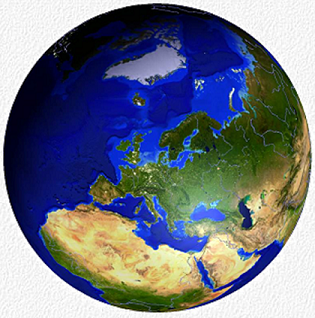| Results, Discussion, Conclusions This webpage was created by Gina Manders and Brenda Zabriskie to fulfill an assignment for ES340 Gemstones and Gemology/ES567 Gemstones of the World, a course at Emporia State University. |
||||
|---|---|---|---|---|
|
|
 Source of 3D Worldmap image: http://www.bestshareware.net/img2/3d-world-map-big.jpg |
|||
|
Results
We used our course text, two other books plus the internet as resources for this project. As a result of combining data from all four, we were able to include more gemstone species in the mapping portion. Discussion The primary challenge involved in implementing this kind of project was the time required for the Test Your Knowledge and Gem Mapping pages. In order to prepare the information on the Test Your Knowledge page, screenshots were taken of our typed text, then borders were added. Finding so many public domain photographs of gems was also time consuming. For combining the descriptions and the images of gemstones for the Test Your Knowledge (Gemstone Game) section, rollover images were prepared using Dreamweaver. Conclusions There is a wealth of information available online regarding gemstones. In looking around the world for gem locations we learned that there are gemstones in our own state, even in our own area. Some of these are no longer being mined, for instance, in the Tri-State Mining District of Southeast Kansas, Southwest Missouri and Northeast Oklahoma, now the location of a number of EPA Superfund Sites. We feel that you will want to visit a number of the sites we listed under references as we learned about some great new uses for familiar resources, particularly finding latitude and longitudes at mindat.org, finding public domain imagery at Wikipedia Commons (also related to mindat.org in that a lot of the imagery referred back to their site), and Robert Culbertson Beste's website. |
||||
|
To Top of Section.
|
||||
|
Back to Gemstones Around the World.
|
||||
|
Next to Learn More.
|
||||
| Problems with this webpage? Please click here to notify authors. Thank you. © Gina Manders and Brenda Zabriskie, 2011 |
||||
